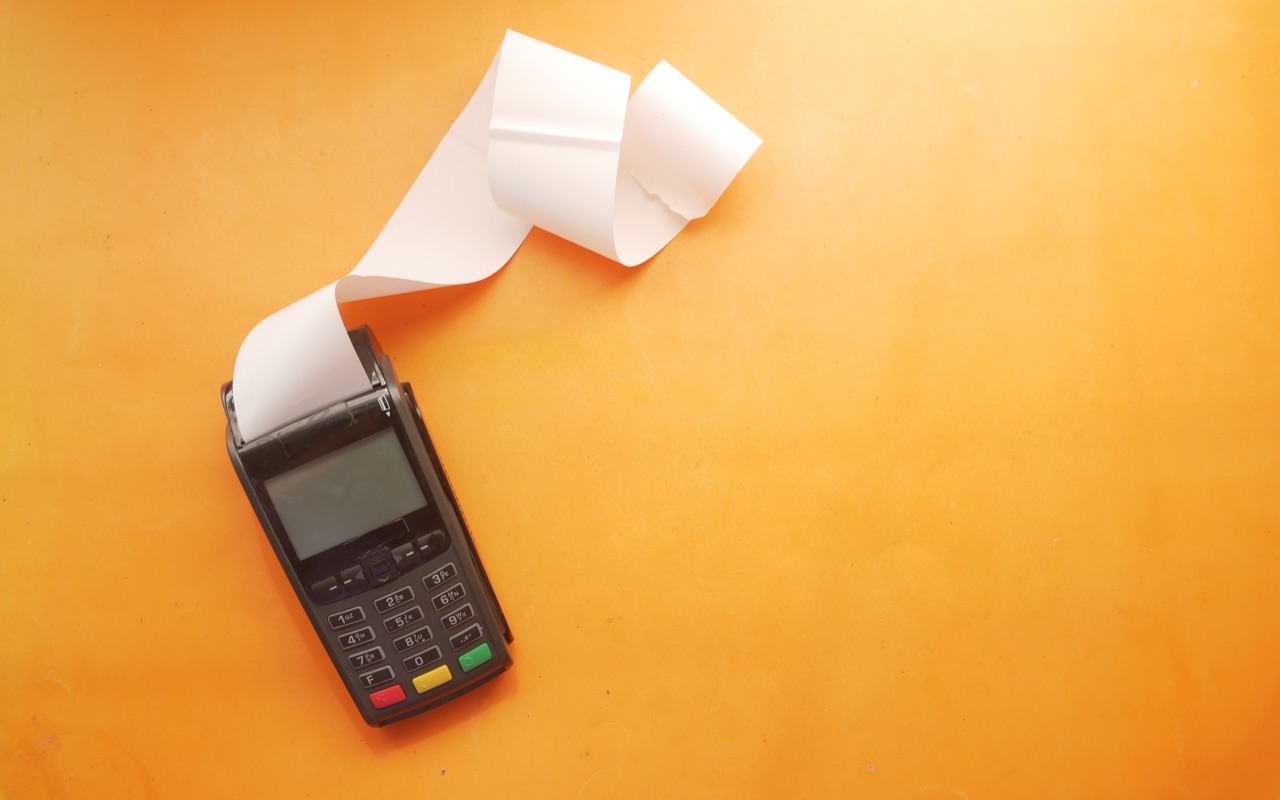How to Fill Out a Receipt Book Correctly: A Step-by-Step Guide
Picture this: you’re a business owner, and your customer has just completed a purchase. As they hand over their payment, you realize you’re unsure about how to fill out a receipt book correctly. It might seem like a small detail, but it’s crucial for maintaining accurate financial records and staying in line with legal requirements. But don’t worry—we’ve got you covered! In this blog post, we’ll take you through a step-by-step guide on “how to fill out a receipt book”, ensuring you stay organized and compliant.
Key Takeaways
- Filling out receipt books correctly is essential for legal compliance and financial management.
- Components of a receipt book include customizable templates to capture transaction details, as well as key information such as business name, address, phone number etc.
- Utilizing technology can help streamline the process with digital solutions offering features like automated calculations and cloud storage.
The Importance of Filling Out a Receipt Book Correctly

There are numerous reasons why it’s pivotal to fill out receipt books correctly, including:
- Legal compliance
- Effective financial management
- Easy tracking of business expenses, applicable taxes, and additional fees
- Ensuring a clear understanding of your financial position
Moreover, a well-organized receipt book allows you to quickly locate individual receipts for tax purposes, making the whole process smoother and stress-free.
One often overlooked aspect of a professional-looking receipt is the customer experience. A clear, detailed receipt conveys competence and trustworthiness, fostering a positive relationship with your customers. Providing them with an original receipt also serves as proof of purchase, protecting both parties from potential disputes.
Legal Requirements and Receipt Books
When filling out a receipt book, adherence to legal requirements is of utmost importance. Issuing receipts ensures proof of purchase for customers, which is essential for various reasons, such as returns, warranties, or tax deductions. Additionally, receipts allow you to record applicable taxes and additional fees accurately, helping you avoid potential legal issues down the line.
Take, for example, rent receipts; both landlords and tenants need to keep track of rental payments for legal and financial reasons. A well-documented rent receipt can save both parties from disputes and potential legal consequences. Therefore, understanding and adhering to the legal aspects of issuing receipts is crucial for any business.
Financial Management and Receipt Tracking
Effective financial management requires vigilant tracking of your sales and payments. A receipt book that is consistently and accurately filled out allows you to monitor the development of your business, manage cash flow, and make informed decisions.
Receipts should include essential details such as the date, customer name, and item purchased, providing a clear record of each transaction. To maintain this organization, it’s important to create receipts consistently and accurately, using proper receipt headings. This level of organization enables you to quickly locate specific receipts, streamlining processes like tax filing or expense tracking.
Practicing diligent record-keeping not only benefits your business but also provides your customers with the necessary documentation for their own financial management.
Components of a Receipt Book

A receipt book typically consists of multiple sets of individual receipt templates, each designed to help you capture essential transaction details. By creating your own receipt book, you can customize these templates to come in different colors, such as white and yellow or white and blue, making it easy to distinguish between the original receipt and its duplicate copy.
Grasping the layout and components of a receipt book is vital for maintaining organized records. In the following sections, we will delve into the basics of receipt book layout and the key information to include in each receipt.
Receipt Book Layout Basics

The fundamental structure of a receipt book includes templates for:
- the date
- customer name
- item purchased
- space for duplicate copies
Carbonless receipt books, available at your local office supply store, are particularly useful, as they produce a clean duplicate of the receipt on the subsequent page without needing carbon paper.
A well-structured receipt template guides you on what information to write and where, ensuring consistent and organized documentation. This level of organization also makes it easier to locate specific receipts when needed, improving overall financial management with the help of a receipt book template.
Key Information to Include in Receipts
Including key information like the business name, address, phone number, items purchased, price, total amount, tax, and payment method in each receipt—much like in an invoice—is indispensable. This comprehensive documentation not only ensures legal compliance but also provides customers with a clear account of their purchase.
Remember to include any applicable taxes or additional fees, such as delivery fees, in the grand total. Providing customers with a complete and transparent breakdown of costs fosters trust and confidence in your business. Additionally, make sure your receipts are easy to read, with all the items sold listed separately and the necessary details clearly presented. This will also help you track business expenses more efficiently.
Step-by-Step Process for Filling Out Receipt Books

Now that you’re familiar with the importance of filling out a receipt book correctly and the components to include, it’s time to put it all into practice. Next, we will guide you through the process of entering the date and receipt number, documenting crucial transaction details, and finalizing and signing the receipt.
Adhering to these steps guarantees meticulous record-keeping, legal compliance, and the issuance of professional-looking receipts that instill trust and confidence in your business.
Entering Date and Receipt Number
The initial step in filling out a receipt book involves entering the date and receipt number. Precise dating of each receipt is a fundamental aspect of maintaining chronological order and tracking financial transactions over a period. Additionally, assigning a unique receipt number to each transaction helps with record-keeping and customer reference.
It’s important to use a consistent format for dates, such as MM/DD/YYYY or DD/MM/YYYY, to avoid confusion and maintain a professional appearance. The receipt number can be a simple numerical sequence or include a prefix based on the type of transaction or product sold, such as “Ch” for chairs and “Lg” for loungers.
Documenting Essential Transaction Details
Once the date and receipt number are entered, the next step is to record key transaction details:
- Business name
- Address
- Customer name
- Items purchased
- Pricing data
Be sure to include a brief description of each item sold and its respective price, as well as any applicable taxes and additional fees.
By providing a comprehensive breakdown of costs, you not only ensure legal compliance but also give customers a transparent view of their purchase. Remember, a well-documented receipt not only benefits your financial management but also serves as proof of purchase for your customers.
Completing and Signing the Receipt
After inputting all the required details, proceed to fill out a receipt by finalizing and signing it. Your signature serves as a guarantee of authenticity and bolsters customer trust. It’s essential to double-check all the information on the receipt before signing it, as any errors or discrepancies can cause confusion and potential legal issues.
If you’re using a carbonless receipt book, make sure to apply enough pressure when signing to ensure a clear duplicate on the subsequent page. With the receipt completed and signed, you can now provide your customer with a copy while retaining the original in your receipt book for accurate record-keeping.
Avoiding and Rectifying Common Mistakes in Receipt Books

Despite careful attention, errors may occur while filling out receipt books. This section will discuss some common pitfalls to avoid and offer advice on their rectification should they arise.
By being aware of potential errors and knowing how to correct them, you’ll maintain accurate records and minimize the risk of financial and legal complications.
Typical Errors to Avoid
Some common mistakes to avoid when completing a receipt book include:
- Forgetting to include the date
- Forgetting to include the receipt number
- Forgetting to include the items purchased
- Forgetting to include taxes and fees
- Forgetting to include a signature
Ensuring that all necessary information is included in each receipt not only guarantees legal compliance but also provides customers with a clear account of their purchase.
Another error to avoid is illegible handwriting. Customers should be able to read and understand the details of their transaction easily, so always write clearly and legibly. Additionally, ensure that your calculations are accurate, double-checking the subtotal, taxes, and grand total to avoid discrepancies and potential disputes.
Correcting Errors in Receipt Books
Should an error occur while filling out a receipt, prompt correction is necessary. For minor errors, such as a misspelled name or incorrect date, simply draw a line through the incorrect information, write the correct details above, and initial the correction. This ensures that the receipt remains accurate and trustworthy while maintaining a professional appearance.
For more significant errors, such as incorrect calculations or omitted information, it’s best to follow these steps:
- Void the original receipt.
- Create a new receipt with the accurate information.
- Mark the original receipt as “void” and retain it in your receipt book for reference.
By correcting errors promptly and accurately, you’ll maintain precise records and uphold customer trust.
Utilizing Technology for Receipt Book Management

Despite the advantages of traditional paper receipt books, technology introduces various solutions to enhance and simplify receipt management. In this section, we’ll examine digital receipt book options and discuss the merits of transitioning from paper to digital receipts.
By leveraging technology, you can save time, reduce errors, and improve the overall efficiency of your financial management.
Digital Receipt Book Solutions
Numerous digital receipt book solutions exist, including apps and software capable of creating receipts, monitoring business expenses, and providing paper copies if required. These solutions often offer additional features, such as the ability to customize receipt templates, automate calculations, and store receipts in a cloud-based system for easy access and organization.
Our own platform, Hiveage, is a user-friendly software that automates accounting operations like estimates and invoices, saving up to 95% of the time spent on these tasks. By utilizing digital solutions, you can streamline your receipt management process and focus on growing your business.
Transitioning from Paper to Digital Receipts
Contemplating a shift from paper to digital receipts entails following certain steps. Here’s what you need to do:
- Research and select the most suitable receipt book app or software for your business needs.
- Once you’ve chosen a solution, input pertinent information for each sale.
- Enter historical receipts into the system.
- Notify your customers of the change.
As you transition to digital receipts, ensure that you maintain accurate records and continue to provide customers with the necessary documentation for their purchases. With the right tools and mindset, transitioning to digital receipts can improve your financial management and enhance the customer experience.
Summary
In conclusion, filling out a receipt book correctly is essential for maintaining accurate financial records, complying with legal requirements, and fostering positive customer relationships. By following our step-by-step guide, understanding the components of a receipt book, and leveraging technology, you can streamline your receipt management process and focus on growing your business. Remember, accurate record-keeping is not only crucial for your business’s success but also serves as an essential tool for your customers’ financial management.
Frequently Asked Questions
What do you write in a receipt book?
When writing in a receipt book, one must include the date of the transaction, contact information, description of products, price, and any applicable taxes or fees. Furthermore, a carbon copy separator should be placed behind the yellow page to complete the receipt.
How do you write a receipt for cash received?
To write a receipt for cash received, include the date, dollar amount, payer name, description of services or products provided, department name and signature of the cash handler. Additionally, contact information, taxes imposed, discounts, itemized list of items sold and their quantity and price should also be included.
What are the legal aspects of issuing receipts?
Issuing receipts is legally required for providing proof of purchase, recording taxes, and avoiding potential legal consequences for inadequate record-keeping.
How can I avoid common mistakes when filling out a receipt book?
Double-check your information, write clearly, and review calculations to avoid common mistakes when filling out a receipt book.
What are some digital receipt book solutions?
Digital receipt book solutions include various apps and software that can generate electronic receipts, monitor business expenses, and even produce paper copies for records.
Join thousands of business-savvy entrepreneurs on our mailing list.
Curated emails that’ll help you manage your finances better.




